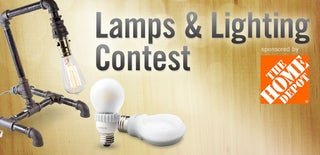Introduction: Illuminated Sign
After building a sign which used strip LEDs (link) I still had a few feet of them left. I decided to try to build a different kind of sign. I am overall happy with the design and build of it, Though I would suggest buying the best quality of plywood your budget allows. The edges show in this project and so low quality plywood will take away from the final look.
Materials
Plywood- I used single side sanded 1/2" plywood from Menards, the 1/2" looked fine but I think 1/4" would look better. Fore the next one of these I am going to build I am going to try the 1/4" Baltic Birch Underlayment you can buy.(link) If you were going to paint the finished piece I would recommend using MDF or MDO.
LED strip lighting- These can be found at Menards or can be found cheap on Amazon. (Link) I used cool white but you can but them in many different colors. I also recent discovered they can be bought at higher density of lights which might get more uniform illumination but I have not tested this yet.
DC power plug- I had mine from an old electronic device I took apart but you can buy them online for cheap.
Switch of some sort- I used a pull chain switch for a ceiling fan it can be found from Menards or online.
DC wallwort- or other power supply rated to the LED strip that you are using.
Misc electrical supplies- wire, heat shrink tubing, solder.
screws
glue
Tools
A way to cut out the shape- I used a band saw but if you have access to a CNC router or laser that could open up a lot more options. You could also just use a jig saw.
Drill
Soldering Iron
Sander- this would probably be less necessary if you cut it with CNC.
Step 1: Starting Out
The first step is choosing your image and size. The major restriction to the complexity of the image is the flexibility of the LED strip. Although flexible it does begin to get difficult to wrap it around many tight curves. In addition it is important to be aware of aligning your strip so a right angle does not fall in the center of an LED.
If you wanted to build something that was more complex it might be possible to substitute EL wire for the LED strips. However I have not yet tested the brightness level of EL Wire in this use. That might come in another Instructable.
I decided to go with the Apple logo because it was a simple form but would allow me to see how this technique worked on both curved and sharp edges, as well as in large and small forms.
There are many options for getting the image onto the wood depending on the tools you have available. To cut the image out of wood there are a couple of different options, you could use transfer paper, or the quick method I used. I mirrored the image on the computer and broke it down in photoshop so I could print it on a standard printer. I then taped the image back together and spray mounted it to the back of the wood(to avoid residue on the front surface, this is why I mirrored the the image before printing).
Now head to the cutting device of your choice and make some careful cuts.
Step 2: Cutting, Sanding and Blocks
To cut the image out I used a bandsaw, but a jigsaw, or even coping saw would work well. The easiest way to do this would probably be a CNC router or laser cutter, but you make so with what you have.
I cut down the background board on a tablesaw after cutting the image, I just centered the cut image on the board and cut it down to give a nice space around the image.
After the image is cut out you are going to want to sand the edges smooth, an oscillating spindle sander would be ideal but I just used a random orbital hand sander which worked perfectly fine.
Next I cut blocks which off set the image from the back and gave the LED strip something the adhere too.
These are just MDF cubes glued to the back of the image. To attach the image to the background board I added a larger block and screwed through from behind.
Step 3: Lights
Now attach the strip lights to the blocks. The adhesive on the back should hold them. I ended up gluing the end and the beginning to insure that they would not release.
It is important to plan where your lights will begin and end to make sure that you do not have a gap in the lighting. To attach wire leads simply solder to the end of the LED strip.
It is very helpful to do power tests while you are attaching parts to make sure everything looks how you want it.
Now on to the wiring.....
Step 4: Wiring and Finish
Once the lights are attached down drill holes to bring the leads to the back.
I built a simple circuit with the pull switch and a power plug. Attaching everything down with epoxy. The next time that I do this I might build a better self contained system rather than just gluing everything down to the back.
To hang the completed piece on the wall and give enough room for the wiring I used a french cleat made on 1/2" plywood with a block at the bottom to stabilize it.
I finished with a couple coats of clear coat over the entire piece.
Thanks for viewing this Instructable. If you have any questions or comments please post them below and I will updated the Instructable.
Thanks!
Step 5:

Participated in the
Lamps and Lighting











